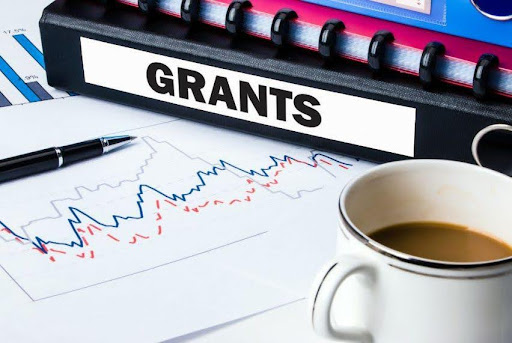Federal grants offer unparalleled opportunities to fund impactful projects, drive innovation, and support societal growth. In 2025, these grants will remain a cornerstone of government efforts to empower individuals, organizations, and communities working toward national priorities. Whether you are a researcher, entrepreneur, nonprofit leader, or government entity, understanding how to navigate the federal grants landscape is key to unlocking vital resources. This comprehensive guide provides a clear roadmap to identify, apply for, and secure federal funding. With billions of dollars allocated annually across various sectors—healthcare, education, technology, environment, and more—federal grants address critical needs while fostering growth and equity. However, these opportunities’ competitive nature and the application process’s complexities can pose challenges.
This guide covers every step of the grant process, from understanding the different types of grants and identifying funding agencies to crafting compelling proposals and managing compliance. It also highlights key trends for 2025, such as increased focus on climate change, technology advancements, and equity initiatives. Whether new to grants or seeking to refine your approach, this guide equips you with the knowledge and tools needed to access federal funding and make a lasting impact.
-
Understanding Federal Grants

Federal grants are financial awards the U.S. government provides to support projects, programs, or initiatives that align with national priorities. These grants are not loans, meaning recipients are not required to repay them. Instead, they serve as investments to address societal challenges, foster innovation, and stimulate economic growth. Federal grants are distributed across various sectors, including healthcare, education, technology, and environmental sustainability, making them vital for individuals and organizations working to create meaningful impact.
There are several types of federal grants, each serving distinct purposes. Categorical grants are the most specific, funding narrowly defined activities such as public health initiatives or infrastructure improvements. Block grants offer greater flexibility, allowing recipients to address broader areas like community development or public safety. Often awarded competitively, project grants support specific initiatives or research proposals, encouraging innovation and creative solutions to pressing challenges. Understanding these types helps applicants identify opportunities best suited to their goals.
While federal grants provide critical funding, they come with stringent requirements. Recipients must adhere to guidelines, submit detailed proposals, and maintain transparency through regular reporting. Navigating these demands can be complex, but the rewards include financial support, credibility, and momentum to drive impactful change.
-
Key Federal Grant Agencies

Several federal agencies serve as primary sources for grant funding, each focusing on specific national priorities. The Department of Health and Human Services (HHS) is the largest grant-making agency, supporting programs in public health, medical research, and social services through initiatives such as the National Institutes of Health (NIH) and the Centers for Disease Control and Prevention (CDC), HHS funds groundbreaking research, disease prevention efforts, and community health programs. These grants aim to enhance the quality of life and address health disparities nationwide.
The National Science Foundation (NSF) is critical in advancing science, technology, engineering, and mathematics (STEM) education and research. NSF grants often fund pioneering projects in emerging fields such as artificial intelligence, climate science, and quantum computing. By supporting cutting-edge research, the NSF fosters innovation that drives economic growth and addresses global challenges. Additionally, its educational programs help cultivate the next generation of scientists and engineers.
The Small Business Administration (SBA) provides financial support for entrepreneurs and small businesses through initiatives like the Small Business Innovation Research (SBIR) and Small Business Technology Transfer (STTR) programs. These grants encourage the commercialization of innovative technologies while driving job creation and economic development. SBA grants are vital for turning bold ideas into thriving enterprises.
-
How to Find Federal Grants

Finding federal grants begins with knowing where to look. The most comprehensive resource is Grants.gov, the official portal for federal grant opportunities. This platform centralizes listings from various federal agencies, making searching for funding by keyword, category, or agency easy. Users can save searches, receive email notifications about new opportunities, and submit applications through the portal by creating an account. Additionally, the site provides resources like webinars and tutorials to help applicants navigate the process effectively.
Another valuable resource is agency-specific websites. Many federal departments, such as the Department of Education, National Institutes of Health, and Environmental Protection Agency, maintain dedicated pages for their grant programs. These pages often include detailed information about funding priorities, application deadlines, and tips for crafting successful proposals. Exploring these sites allows applicants to gain insight into the agency’s mission and tailor their projects accordingly.
Monitoring the Federal Register can benefit those seeking a more proactive approach. The Federal Register publishes daily updates on federal funding announcements and policy changes, offering timely information on upcoming opportunities. Networking with industry peers, attending grant-related conferences, and joining professional associations can uncover less-publicized funding programs and collaborative possibilities.
-
Preparing a Winning Grant Application

Preparing a winning grant application requires careful planning, strategic alignment with funding priorities, and attention to detail. Start by thoroughly researching the grant opportunity to ensure your project meets the eligibility requirements and aligns with the funder’s goals. Understand the grant’s purpose and specific evaluation criteria, as these are the benchmarks reviewers will use to assess your proposal. A strong application demonstrates a deep understanding of the problem and presents a compelling solution that aligns with the funder’s mission.
A well-crafted proposal includes several key components. Your project narrative should outline clear objectives, a logical methodology, and measurable outcomes. Use data and evidence to support your approach and emphasize the potential impact of your project. The budget section should provide a detailed, realistic breakdown of costs, showing how the funding will be used efficiently and effectively. Include letters of support or partnerships to demonstrate collaboration and credibility. Pay close attention to submission guidelines, including formatting and deadlines, as minor errors can disqualify your application.
Finally, invest time in editing and seeking feedback. A polished, professional application free of errors enhances your credibility. Leverage resources such as grant-writing workshops, peer reviews, and expert consultants to refine your proposal and increase its chances of success.
Conclusion
In conclusion, federal grants in 2025 present a valuable opportunity for individuals, organizations, and businesses to secure funding for various initiatives aligned with national priorities. Whether you’re seeking support for research, education, community development, or technological innovation, understanding the different types of grants, key funding agencies, and application processes is crucial to success. To navigate the federal grant landscape, identify the right opportunities through resources like Grants.gov, ensure your project aligns with the grant’s objectives, and craft a detailed proposal that demonstrates impact.
Challenges such as competition and complex requirements are common, but persistence, attention to detail, and seeking expert guidance can significantly improve your chances of success. The growing trends of funding for climate change, technology advancements, and equity initiatives in 2025 suggest an increasing emphasis on projects that address global challenges and societal needs. By staying informed, following best practices, and being adaptable, you can unlock the potential of federal grants to fund projects that drive innovation and contribute to a brighter future.

